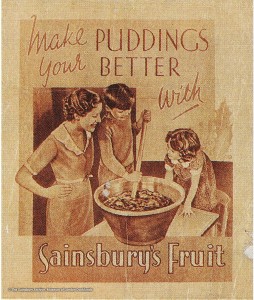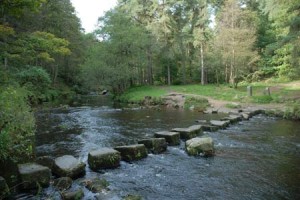Mary Hollinrake (b. 1912): Fun and Festivities
For a young family orientated girl, it is no surprise to see that Christmas and New Year was mentioned with a high regard in Mary’s memoir. Ronald Hutton explained that “The main development of the twentieth century was that the now fully remodelled Christmas spread outwards from the wealthier third of society to take in the whole of it, and the nation’s public life as well”, suggesting that more working-class families were able to enjoy Christmas as the twentieth century progressed.

Mary described Christmas and New Year as “exciting family occasions”, and then went onto discuss her Christmas routine in detail. They had an artificial Christmas tree to save money and because it made a mess, which had “glass baubles”, “small coloured candles” and “bags with chocolate coins in them” (49) on it. By including such specific details of her Christmas, it shows the importance of the overall day to her. On Christmas Day, they had “presents in the morning, dinner either at home with aunts and uncles coming or us going there” (49). However, the main topic of this section is dedicated to food, with Mary listing numerous examples of food consumed over the Christmas period. On Christmas eve there was “trifles and jellies and cakes, often spice cake and cheese” (49) and on the main day they had “chicken and a piece of leg pork” and “Christmas pudding with silver threepenny bits in and mince pies” (49). As a Christian family, Mary’s experience of Christmas as a child highlights the importance of tradition during the times when it was not as commercialised on the scale it is today.
She also included Easter and Whitsuntide, and described them as “always quite special” (49) as “New clothes were the order of the day”, yet the family day still continued as “social life was still the same round-a-bout of family visits” (49). On this day, Mary discussed how they always went on a big family walk when visiting family, and would stop by at some “beauty spots” (50) on the way. She seemed quite passionate about these walks as she listed many places she enjoyed such as “Hardcastle Crags”, “Stoodley Pike” and “Gorpley”. She then wrote that “There were many lovely walks on the hillsides” (50), showing her appreciation for the simple pleasures in working-class life.

There was also some description on weekends spent with the family at her uncle’s farm without a holiday or event attached to it; “All the family was recruited on a sunny weekend” (46). Her mother and aunts “took huge baskets of super sandwiches and pies and cakes to the workers” with “homemade lemonade, jugs and jugs or it with slices of lemon on top” (46) also. Mary wrote that “It was marvellous at Clinton winter and summer” and would sometimes sit on her uncle’s horse and cart when doing the milk round which had her in “great glee” (46).
It is evident from these well loved memories how much Mary enjoyed her childhood as she remembered the facts so well. We can see that it did not have to be a special occasion where she spent time with her close family, but almost every weekend they had spare. This is essential in showing the close knit, family spirit that the working-class had, which we can see by how they helped at Mary’s uncle’s farm in both summer and winter.
References
Hollinrake, Mary. ‘Lancashire Lass’. Burnett Archive of Working Class Autobiography, University of Brunel Library, Special Collection, 2:413. Extract in John Burnett, David Vincent and David Mayall (eds) The Autobiography of the Working Class: An Annotated, Critical Bibliography 1790-1945, 3 vols. (Brighton: Harvester, 1984, 1987, 1989): 2:413.
Hutton, Ronald. Stations of the Sun: A History of the Ritual Year in Britain. Oxford: Oxford University Press, 2001.
Image of Hardcastle Crags, Yorkshire.
http://www.walkingbritain.co.uk/walks/walks/walk_photo/212110/
Image of a Sainsbury’s Christmas pudding advert, c.1920’s.
http://www.sainsburyslivingarchive.co.uk/collections/christmas/the-pudding-of-christmas-past

Leave a Reply